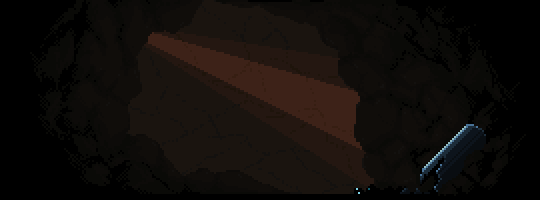Just a short one today. This entry, we’ll take an even further detour into the etymological origins of Vahki (and associated designations). Somewhat ironic, this being Tax Day. >>
Vahki, n.cmpd. “law-keeper; lit. measurer-of-limits” [variant forms vah’ki, vahiki, fanhiki]
fa(n), stm. “limit, restriction, range, field; also roof, ceiling, sky” [probably derived from the elemental prefix fa “magnetism; magnetic (field)”; spelling variant pha(n)]
hiki, n. “piece/part/portion of (something); measurement, extent”
The stem fa(n) combines straightforwardly with hiki to form the compound fa(n)-hiki “limit-measurement”. The term hiki may be familiar to you: it has a further shade of meaning involving “trickery, deception” as a consequence of its etymology (see dictionary entries <hiki>, <mahiki> and discussion in previous posts). Perhaps ironically, the term hiki was also used as a unit of measurement, originally for dividing up land during the settlement phases of Matoran prehistory (hī-kī “part/piece of a thing OR place”) and later as a term for measuring out substances and amounts of material in industry and trade. It is this meaning that is at work in the etymology of the term vahki (fan-hiki > fahiki > vah’ki, vahki), which ultimately took on the meaning of “law-keeper”: “one who measures limits”. This was originally a general term referring to any being involved in law-enforcement, and this usage still persists in non-Metru Nuian jurisdictions. Within the bounds of Metru Nuian culture, however, the term vahki has almost exclusively been applied to the law-enforcement automatons invented by the Onu-Matoran Nuparu.
Vahki Designations:
Nuparu, inventor of the first Vahki law-enforcement automatons, wrote in his memoirs that he intended the Vahki to stand as representations of law and order in a city that, to him, seemed to be slowly slipping back into the same old ways that ultimately led Metru Nui into the Matoran Civil War and its terrible aftermath. The names that Nuparu devised for the different Vahki types reflected these intentions, as well as his ultimate inspiration for the Vahki: the long-dormant Bohrok swarms.
The first Vahki units were designated Borzatahkak “vigilant judges/law-keepers”, later reduced to Bordakh (borzatahkak > borzdahk’k > bordakh). This term was, in fact, patterned on the name of the Bohrok themselves. Nuparu recounts how he consulted the Ko-Metruan scholar Ihu (an authority on Matoran linguistics) on the etymology of terms related to the Bohrok swarms and ultimately devised a compound boh-oro-zatahki-ak, directly based on the original form of the name Bohrok: boh-oro-ak (see previous post for discussion of the translation of this term). The element zatahki, which Nuparu added to his invented term, is originally a compound of zata “authority, order” and hiki “piece/part/portion of (something); measurement, extent” and yields the modern dahki “judge; lit. measurer-of-authority/order ” (zata-hiki > zadah’ki > zdakhi > dahki). The terms dahki and vahki are very closely related in origin and composition, and dahki is, in fact, attested as a variant term used to refer to Vahki.
The upshot of the original compound Borzatahkak is a term referring both to the fact that the Vahki units follow the orders of the law (boh-oro “following words; vigilant for words”) and that they zealously represent and enforce that law (zatahki-ak “judge+intensive particle”), in accord with Nuparu’s vision for his inventions.
Other designations for the Vahki were also devised, both by Nuparu and others. The term Zatahkak, later Zadakh (zatahkak > zadahk’k > zadakh) is a shortening of Borzatahkak, later used as a designation for the Le-Metruan Vahki squads.
Other terms originated as further elaborations of this original compound: the Vorzakh units take their name from a compound fa(n)-oro-zatahki-ak, making use of the stem fa(n) “limit, restriction, range, field” which, as noted above, also forms the basis of the term vahki itself (fa-oro-zatahki-ak > vaorzatahkak > vorzdahk’k > vorzakh).
Likewise, the name of the Rorzakh units originates as a compound rho-oro-zatahki-ak, replacing fa(n) with the stem rho, of similar meaning, “boundary, ring, edge” (rho-oro-zatahki-ak > rhorzatahkak > rorzdahk’k > rorzakh))
The two remaining Vahki-designations -- Nuurakh and Keerakh -- are also the most recent in origin. They were not, therefore, formed according to the same elaborate compound-pattern as the others. At the time of their formation, the suffix -akh had been reinterpreted as a general “Vahki-designation suffix”, rather than as a component of a larger compound zatahki-ak (manifesting as -zakh or -dakh in the reduced forms of the other Vahki designations above). In both cases, this “new” element -akh was simply applied to a stem: in the case of nuurakh, the stem nuur “firm command” (older nu-or “earth-word”) forms the basis of the compound: nuor-akh > nuurakh “firm-command Vahki”. In the case of keerakh, the stem keer “harsh/severe command” (older kee-or “harsh/severe word”) forms the basis of the compound: keer-akh > keerakh “harsh/severe-command Vahki”.
-
 1
1
-
 1
1


0 Comments
Recommended Comments
There are no comments to display.